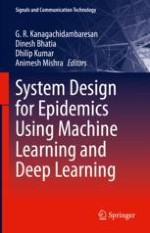2023 | Buch
System Design for Epidemics Using Machine Learning and Deep Learning
herausgegeben von: G. R. Kanagachidambaresan, Dinesh Bhatia, Dhilip Kumar, Animesh Mishra
Verlag: Springer International Publishing
Buchreihe : Signals and Communication Technology
